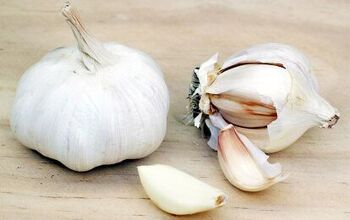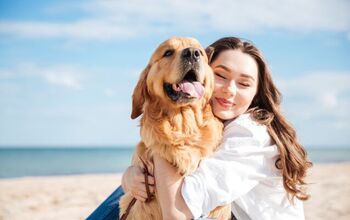Benefits Of Garlic Supplements For Dogs

Garlic has been given a bad rap in the doggy world, but it actually has a range of health benefits for canines. A lot of sources online claim that it’s harmful to your dog and should always be avoided. The fact is, garlic can be harmful in very large quantities, but if you stick to a controlled dose, there shouldn’t be a problem (if your dog has no preexisting anemia issues). Once you’ve learned about all the wonderful health benefits this fragrant supplement has, you may want to consider adding this supplement to your dog’s diet.
Why is Garlic a Controversial Subject?
Garlic belongs to the Allium family. This is the same family as onions, which can indeed be fatal for dogs. Alliums, including garlic, do contain thiosulphate, ingestion of which has been known to lead to anemia, liver damage and, potentially, death. But – and this is a big but – garlic contains a tiny amount of thiosulphate, so your canine companion would have to devour an extremely large quantity of the stuff to cause any problems. That said it’s worth erring on the side of caution and only giving a restricted dose to your pup.
Related: The Shocking Truth About Dogs and Garlic
What are the Health Benefits of Garlic for My Dog?
The reason why garlic is recommended for dogs, despite being very slightly toxic is that it has a number of excellent benefits for your pup’s health. These include:
- Fighting Infection: Garlic has antimicrobial and antibiotic properties and, as such, is beneficial for fighting a range of bacterial, fungal and viral infections.
- Boosting the Immune System: Garlic increasing the activity of cells that seek and destroy cancer cells and invading microbes, thus stimulates immune function. As such, it can help dogs who are fighting cancer or have suppressed immune systems and dogs fighting cancer. It will also boost the immune system in healthy dogs.
- Improving Liver Function: Various compounds that are contained in garlic help the liver to get rid of toxins from the body, which enhances liver function.
- Repelling Ticks and Fleas: It’s unclear exactly why garlic prevents tick and flea infestation, but anecdotal evidence suggests it’s very effective. It’s hypothesized that fleas and ticks don’t like the odor of garlic which is released through the dog’s skin.
Related: Flea Repellent Dog Treat Recipe
Garlic can be fed to your dog daily, but – as with the feeding of most herbs – it can be a good idea to either give your dog a day or two with no garlic each week, or a week without garlic every month or two. There’s differing wisdom as to exactly how much is the optimum dosage for dogs, but according to Dr. Pitcairn in “The Complete Guide to Natural Health for Dogs and Cats”, dogs should be fed a daily amount of garlic that varies depending on their weight. Pitcairn suggests the following dosage:
- Dogs of 10 to 15 pounds: Half a clove
- Dogs of 20 to 40 pounds: 1 clove
- Dogs of 45 to 70 pounds: 2 cloves
- Dogs of 75 to 90 pounds: 2 1/2 cloves
- Dogs of 100 pounds and over: 3 cloves
Lauren Corona is a freelance writer from merry old England. She specializes in writing about dogs and other critters. Lauren lives near Oxford, with her gorgeous Doberman, Nola. When she’s not tapping away at the keyboard, you’ll find her walking in the woods with Nola-dog, raising money for the Oxfordshire Animal Sanctuary, cooking vegan food, making zines and writing about herself in the third person.

Lauren Corona is a freelance writer from merry old England. She specializes in writing about dogs and other critters. Lauren lives near Oxford, with her gorgeous Doberman, Nola. When she's not tapping away at the keyboard, you'll find her walking in the woods with Nola-dog, raising money for the Oxfordshire Animal Sanctuary, cooking vegan food, making zines and writing about herself in the third person.
More by Lauren Corona
























